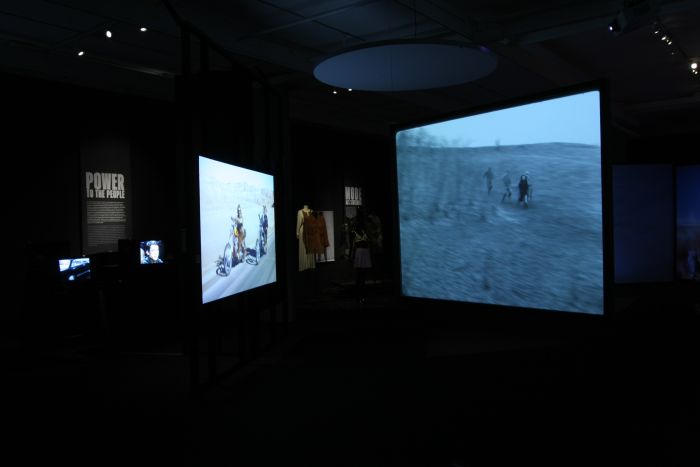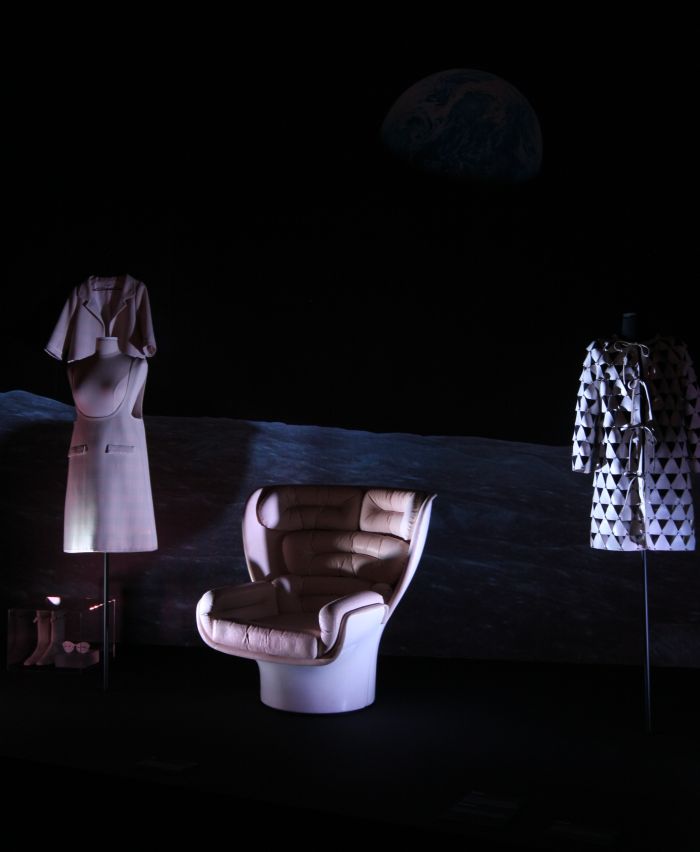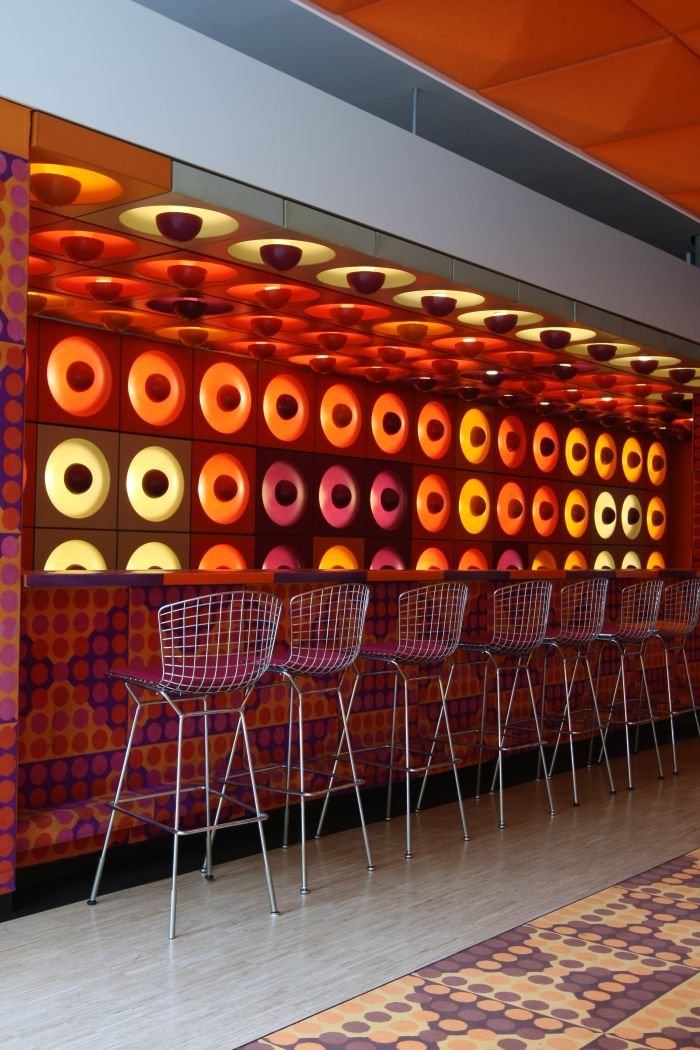Escalating tension between the nuclear powers, public discourses on gender equality/respect, racial equality/respect, religious equality/respect, thousands displaced through war and conflict in South East Asia, destabilising wars and conflicts in the Middle East, warnings about irreversible environmental stability and the long-term habitability of earth, thousands on the streets demanding change.....
And the situation in 1968 wasn't very different.
With the exhibition 68. Pop und Protest the Museum für Kunst und Gewerbe Hamburg explore the relationships between the social and political developments of the late 1960s and the cultural manifestations of the period......

Although only a moment in a longer period of social and political turbulence, the year 1968 stands today symbolic for the period, and as such has taken on near legendary proportions. That it has done so is in no small measure due to the many now near legendary moments that occurred during that year including the student protest in Paris, the Black Power salute at the summer Olympics in Mexico City or the assassination of Martin Luther King Jr. in Memphis, Tennessee. To name but three.
Alongside such political and social moments the late 1960s also saw numerous important cultural developments, as an exhibition 68. Pop und Protest focuses (largely) on such cultural developments setting them against the backdrop of the political and social developments, discussing them less as accompaniments to the political and social but as central components of such, as expressions of protest and/or visions of future society. As a period the 1960s may not have marked the moment when cultural activities became political weapons, but arguably marked a previously unseen concentration of such events and allowed for a very clear public demonstration of the power of such. A demonstration whose resonance can still be felt today.
Initially setting such global considerations aside, 68. Pop und Protest opens with an exploration of the situation in Hamburg at that end of the 1960s, and for all how the students at Hamburg University responded to the influences and impulses of the day - SPOILER ALERT!!!, they revolted. And as an opening to such an exhibition the local Hamburg focus is very pleasing and welcome as, on the one hand, and with our museologists hats on, it allows any touring version to be effortlessly adapted to a new location through local objects reflecting local stories; but primarily because it reminds us that global protests are only the sum of local protests, if you will that global rebellion begins at home. And in which context there is something beautifully poetic about one of the first "victims" of 68 one meets, the colonialist Hermann von Wissmann, who had served as Governor of German East Africa, and who, or at least his statue, was then cut down, along with his reputation and that of the organisation he represented, as new understandings of global society, global humanity, developed in the course of the 1960s and exploded forth in Hamburg in 1968. An act of solidarity with those oppressed by colonial rule, but also a very local act undertaken in a very global context.

Much like the freighters sailing down the Elbe, Pop und Protest moves quickly on from Hamburg into the wider world exploring the developments of the period through numerous creative disciplines including film, theatre, graphics and furniture, the latter featuring an example of the UP5 & UP6 armchair and ottomann by Gaetano Pesce, as we noted before, one of the most potent comments, and critical statements, on women’s social role ever formed into furniture, and an object which not only in its inherent criticism and rejection of existing conventions perfectly represents the period, but also through the polyurethane foam construction and vacuum packed shipping format stands as a true revolution in terms of materials and production processes.
Processes of another kind are explored in the so-called Mind-Expander I chair by the Haus-Rucker-Co collective, a chair that allows you to become, in the words of Jimmy Hendrix, experienced, albeit without having to fear any subsequent police checks. Various films on show in the near vicinity, not least Michelangelo Antonioni's Zabriskie Point, succinctly explain what happened when young minds were expanded. And meaning that for the second time in our short lives' we found ourselves surrounded by naked hippies in the MKG Hamburg: last time the proto-hippies of early Art Nouveau, here their fully evolved descendants.

Not that its all nudity. As one would expect in any exhibition focusing on the late 1960s, clothing plays an important part in the exhibition presentation, be it Yves Saint Laurent's female trouser suit, the mini skirt/mini dress, numerous works by André Courrèges, or a whole wall of paper dresses, a concept conceived as a marketing gag by the Scott Paper Company but which in its inversion of conventions on value and cost, on material and luxury, and the questions it poses about the superficiality of society's values, had and has all the hallmarks of Pop Art.
In which context, Pop und Protest also encompass one of the most audacious interpretations of the late 1960s Pop inspired design: Verner Panton's canteen and bar for the Spiegel office building in Hamburg, part of a larger commission Panton realised in 68/69, and which included monochrome editorial floors with each colour selected to support and encourage work/workers, a swimming pool, reception area, and the canteen and bar. Because back then you could have bars in office buildings. As in bars, not smoothie bars. Over the years Panton's work was slowly painted over or refurnished away, and when Der Spiegel moved to a new building in 2012 the last remnants of canteen and bar were acquired by the MKG, where they stand today in their (largely) orangey glory as a potent reminder of both the spirit of the times and also the importance of Verner Panton.
And also very neatly underscore that alongside the serious political events, the violent confrontations, and deep-browed students in endless plenum discussing post-revolution society, many of the cultural developments of the period were at their core very, very playful. That despite the many pains of the planet and society, there was a general optimism in the future. Sure there are always nihilists and doommongers, but as Pop und Protest argues the over-riding feeling at the time was an unyielding faith in the future, that that future was bright, the future was fun, liberated, uninhibited, innocent, that the future was ours.
And thus whereas many of the objects presented weren't necessarily conceived as political/social acts by their progenitors, they are and were very much political/social acts, because of their relationship to the period, because of the inherent links between politics/society/culture. That they were in their own small ways calls to revolution.
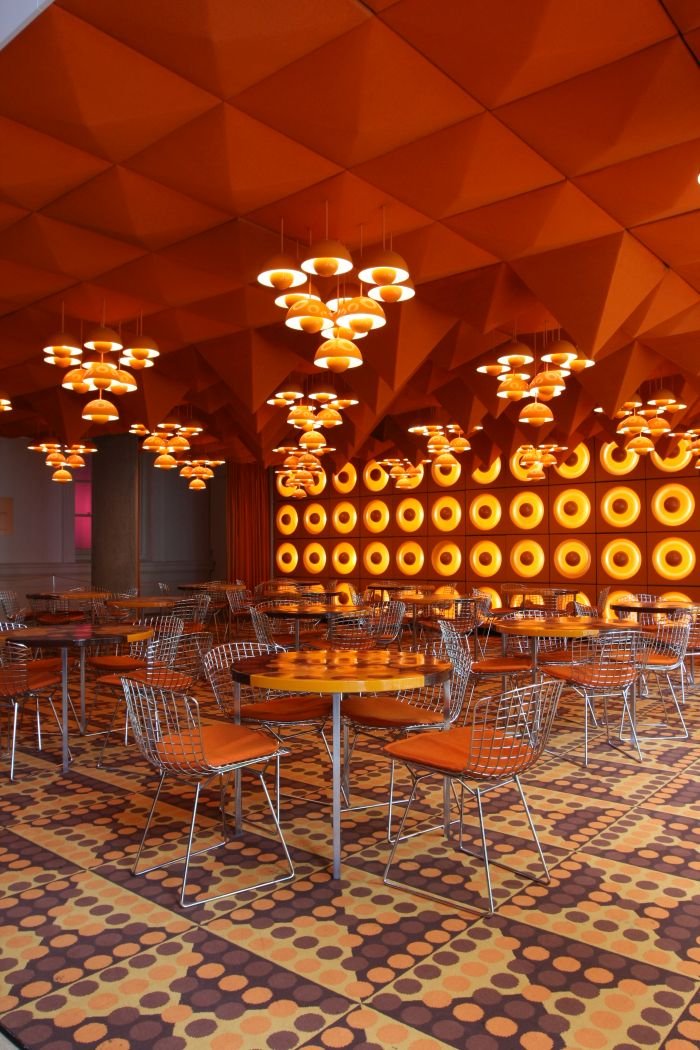
A well paced exhibition 68. Pop und Power avoids the trap of spending too long on one topic, but rather understands the necessity of skipping sprightly on from one theme to the next. Which yes, means, by definition, all subjects are tackled with a breathtaking degree of brevity. Similarly at some 200 objects it is a relativity bijou affair when one considers the scale of the topic. Which aren't complaints. Everyone knows the story of 1968, or at least knows a bit, knows it was important, knows it was legendary, knows it had something to do with Paris and hippies, Pop und Protest doesn't set out to be a definitive exploration of the events of the period, nor should it; much more seeks to explain how the events of the period relate to the understandings creatives had of their profession, to explore the motivations of designers, artists, authors at the time and to help explain how the varying political, social and cultural threads of the period crossed and inter-wove to create the complete composition "1968". And that is a form of story-telling which benefits from a lighter approach, of keeping things moving, of avoiding the complications too much depth can bring.
To that end 68.Pop und Protest makes extensive use of documents and films, meaning it is an exhibition that demands a little active input from the visitor, but which rewards in relation to the input applied; it's one of those exhibitions that is, we would propose, well suited to a lazy afternoon when you aren't really able to focus on anything in your actual world, but are in desperate need of some mental engagement. And at the end, or at least what were calling the end for the sake of short-term convenience, you can relax in the viewing arena and enjoy footage from the 1967 Monterey Pop festival. And by relax we mean on the becushioned viewing platform, not that you should emulate any of those at Monterey. Although, you could try watching it from Mind-Expander I and pretending you were there.
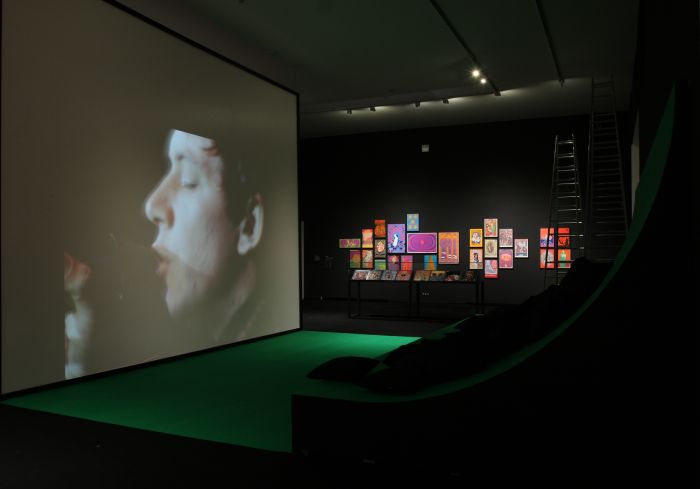
Viewing 68. Pop und Protest two things occurred to us, both associated with Verner Panton's Spiegel canteen. The first standing in the canteen itself, and specifically its somewhat flat appearance. No, flat's not the right word. Tired? Static? Absent? As a room installation the canteen is very much of its age, and looks it, while not taking anything away from what Panton achieved, far from it, we're huge admirers of the project, but it exists in the late 1960s, and carries that fact with pride. Similarly the form of cultural protest and rebellion presented in Pop und Protest are, largely, essentially, of that time, yes including Lennon and Ono's Bed-ins. Don't need that no more. Really don't. Contemporary society requires contemporary protest forms, contemporary forms which make use of, develop and evolve, contemporary media, contemporary culture and contemporary technology, in the way the creatives of the 1960s used, developed and evolved theirs. And for all the way the creatives of the 1960s brought playfulness, optimism, irony, liberation, inhibition, fun into their protest. Which is something we believe we touched on with our #campustour tales of revolting Kunsthochschule Kassel students.
The other consideration could be found on the title page of the current Der Spiegel on the day we visited Hamburg. Revolution - warum die Deutschen so oft scheitern, it ponders. Revolution. Why Germans so often fail/flop/founder. Viewing 68. Pop und Protest the more urgent question is why are we all, collectively, so unsuccessful with our protesting? How did a period that challenged convention, questioned collective wisdom, established new ethical understandings, broke existing social orders, pushed forward new social and political agendas and arguably brought more playfulnesses, fun, emancipation and optimism into society than at anytime in human existence, how did that become our 2018?
Or perhaps better put, ???
Despite our little word game at the beginning, the world of 2018 is fundamentally different from that of 1968, and events of 1968 can't help us directly respond to the world of 2018, but understanding events of 1968, for all their cultural context, for all how cultural developments interacted with social and political developments, and that they continue to interact and influence one another, can help us make better informed decisions. And also help us understand the importance of a little pop in protest.
68. Pop und Protest runs at the Museum für Kunst und Gewerbe, Steintorplatz, 20099 Hamburg until Sunday March 17th.
Full details, including information on the accomapning fringe programme can be found at www.mkg-hamburg.de


